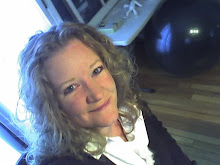the free-return trajectory
 I posted this nearly two years ago and felt like re-posting it today.
I posted this nearly two years ago and felt like re-posting it today.Warning: this will give you new insight into my not-s0-well-hidden geekiness. :) enjoy.
ok, the diagram is kinda hard to read, but the green line is what's called a "free-return trajectory".
yesterday i bought the book "Lost Moon", written by Jim Lovell, and made into the movie Apollo 13. I'm a closet science geek. Not so closet anymore I guess, but I love this stuff. There's something deeply poetic about the way the universe works, and I love learning about it.
A free-return trajectory is a path that uses the earth's and the moon's gravitational forces to propel a spacecraft around the moon and back to earth again. It's called a "free-return" because it is, in essence, automatic. With some minor course corrections, a space craft will automatically be whipped around the moon, and pulled back into the Earth's orbit, simply because the Earth's gravitational pull is so strong. The Earth's gravitational pull is so strong, in fact, that a spacecraft traveling at 20,000 mph when leaving Earth's atmosphere will have been slowed to under 5,000 mph by the time it reaches the moon. The moon's gravity will temporarily grab hold of the spacecraft, but as soon as the craft rounds the moon, the Earth's gravity begins to pull it back again.
What an elegant, beautiful analogy for the pull God has, or would like to have, on our lives. Specifically on our hearts and souls. While it's true that smaller, less significant things can temporarily pull us away, God's "gravity" is always stronger. We don't stay away by accident, but by choice. Just as a spacecraft has to make a concerted effort to remain in the moon's orbit, so we have to make the same effort to orbit those smaller objects that try to pull us away from God.
Some people would probably draw the conclusion that the concept of the "free-return" says more about the pull that the world has on us, but I'd have to disagree. The larger object always has the greatest pull, and there is no object larger than God. But the further away you get, even from the largest object, the more you can be pulled and influenced by the smaller ones. The smaller objects don't affect us because they're irresistible. They affect us because we've gotten too far away from the one object that is truly irresistible. And yet, the gravitational pull of the larger object is still there. And when we round the "dark side of the moon" and come back into the light of the lunar sunrise, it will begin pulling us back home. If only we'll let it.


0 Comments:
Post a Comment
<< Home